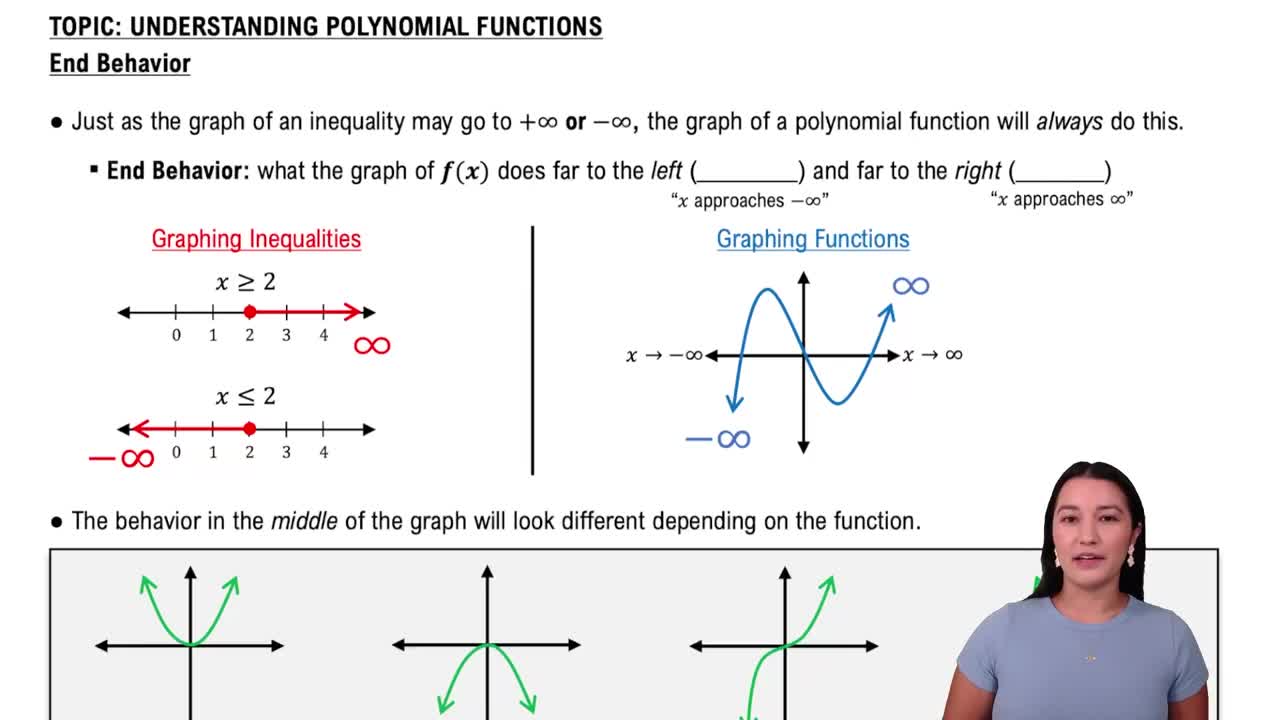Table of contents
- 0. Review of Algebra4h 16m
- 1. Equations & Inequalities3h 18m
- 2. Graphs of Equations43m
- 3. Functions2h 17m
- 4. Polynomial Functions1h 44m
- 5. Rational Functions1h 23m
- 6. Exponential & Logarithmic Functions2h 28m
- 7. Systems of Equations & Matrices4h 6m
- 8. Conic Sections2h 23m
- 9. Sequences, Series, & Induction1h 19m
- 10. Combinatorics & Probability1h 45m
3. Functions
Intro to Functions & Their Graphs
Problem 57d
Textbook Question
Determine whether each function is even, odd, or neither. See Example 5. ƒ(x)=-x^3+2x
 Verified step by step guidance
Verified step by step guidance1
Identify the function given, which is ƒ(x) = -x^3 + 2x.
To determine if the function is even, replace x with -x in the function and simplify. The function is even if ƒ(-x) = ƒ(x).
To determine if the function is odd, replace x with -x in the function and simplify. The function is odd if ƒ(-x) = -ƒ(x).
Calculate ƒ(-x) by substituting -x into the function: ƒ(-x) = -(-x)^3 + 2(-x) = x^3 - 2x.
Compare ƒ(-x) with ƒ(x) and -ƒ(x) to determine if the function is even, odd, or neither.
Recommended similar problem, with video answer:
 Verified Solution
Verified SolutionThis video solution was recommended by our tutors as helpful for the problem above
Video duration:
1mPlay a video:
Was this helpful?
Key Concepts
Here are the essential concepts you must grasp in order to answer the question correctly.
Even Functions
A function is considered even if it satisfies the condition f(-x) = f(x) for all x in its domain. This means that the graph of the function is symmetric with respect to the y-axis. A common example of an even function is f(x) = x^2, where substituting -x yields the same result as substituting x.
Recommended video:

Exponential Functions
Odd Functions
A function is classified as odd if it meets the condition f(-x) = -f(x) for all x in its domain. This indicates that the graph of the function is symmetric with respect to the origin. An example of an odd function is f(x) = x^3, where substituting -x results in the negative of the function's value at x.
Recommended video:

End Behavior of Polynomial Functions
Neither Even Nor Odd Functions
A function is neither even nor odd if it does not satisfy the conditions for either classification. This can occur when the function has terms that do not exhibit symmetry, such as a combination of even and odd powers. For instance, the function f(x) = x^2 + x is neither even nor odd, as it does not meet the criteria for either symmetry.
Recommended video:

End Behavior of Polynomial Functions

 5:2m
5:2mWatch next
Master Relations and Functions with a bite sized video explanation from Nick Kaneko
Start learningRelated Videos
Related Practice






